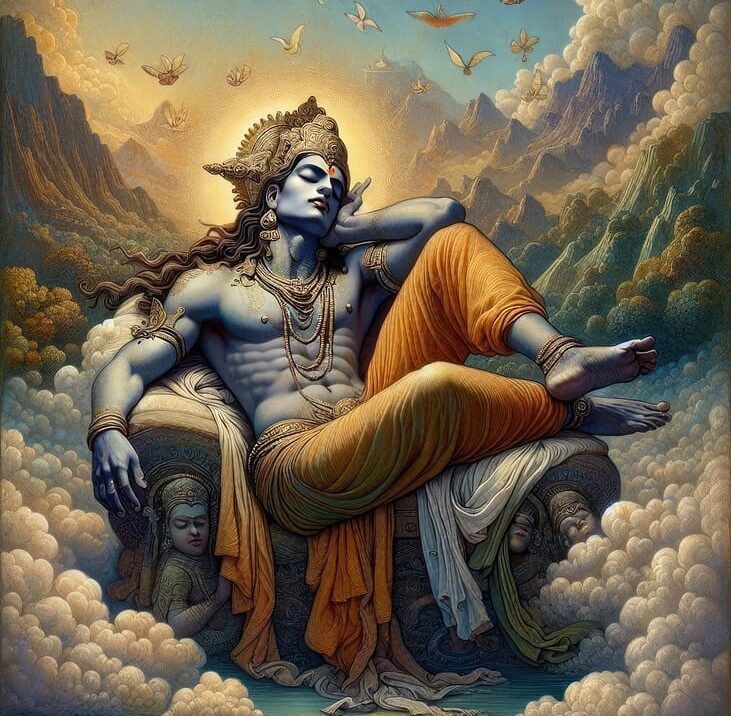Table of Contents
1. Introduction to Dashavatara

The Dashavatara, a revered set of ten avatars of Vishnu in Hindu mythology, provides a compelling narrative that can be interpreted through the lens of evolution. Each avatar represents a significant phase in cosmic history, reflecting changes in both moral and cosmic order. This article explores how these mythological avatars correspond to evolutionary stages, offering a unique perspective on the evolution of life from early marine organisms to advanced civilizations.
2. Matsya (The Fish)

Mythological Context
Matsya, Vishnu’s fish avatar, is known for saving the sage Manu and humanity from a great deluge. The fish form symbolizes the preservation of life and knowledge during a catastrophic event.
Evolutionary Explanation
Matsya parallels the earliest stages of life, which originated in the oceans. This stage represents the transition from simple, single-celled organisms to more complex multicellular life forms. The evolution from aquatic environments to terrestrial habitats is a pivotal moment in evolutionary history.
Key Evolutionary Concepts
- Origin of Life: Life began in the oceans with simple organisms, gradually evolving into complex forms.
- Transition to Land: Fish evolved into amphibians, developing limbs and lungs to adapt to life on land.
3. Kurma (The Tortoise)

Mythological Context
Kurma, the tortoise avatar, supported Mount Mandara during the churning of the ocean, symbolizing stability and support. This avatar played a crucial role in obtaining the nectar of immortality.
Evolutionary Explanation
Kurma reflects the evolution of early vertebrates, such as tortoises and reptiles. These creatures developed hard shells and robust skeletal structures, marking a significant step in vertebrate evolution.
Key Evolutionary Concepts
- Development of Vertebrates: The emergence of vertebrates brought complex structures like internal skeletons.
- Adaptation: Early vertebrates adapted to various environments, showcasing evolutionary specialization.
4. Varaha (The Boar)

Mythological Context
Varaha, the boar avatar, rescued the Earth from the demon Hiranyaksha, symbolizing strength and protection. This avatar illustrates the importance of safeguarding the Earth.
Evolutionary Explanation
Varaha parallels the emergence of early mammals. The transition from reptiles to mammals introduced features such as warm-bloodedness, hair, and live birth, allowing mammals to thrive in diverse habitats.
Key Evolutionary Concepts
- Mammalian Evolution: Mammals developed advanced brain structures and varied reproductive strategies.
- Adaptive Radiation: Early mammals diversified into various forms and ecological roles.
5. Narasimha (The Man-Lion)
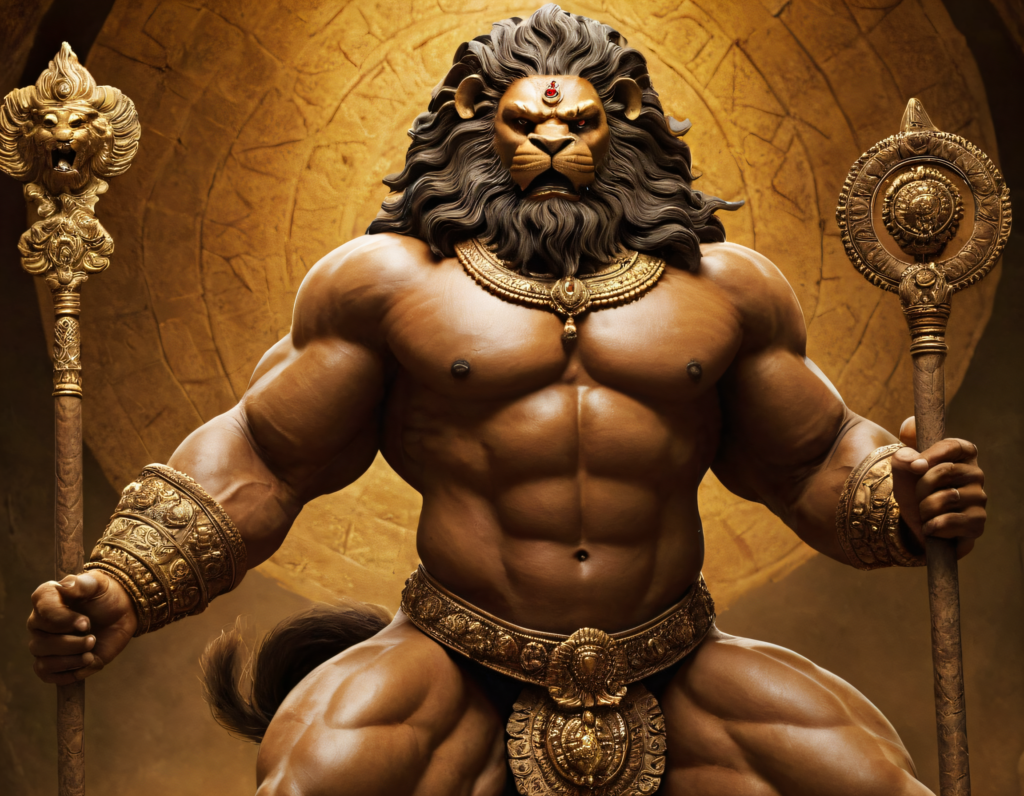
Mythological Context
Narasimha, the man-lion avatar, appeared to protect his devotee Prahlada and defeat the demon Hiranyakashipu. This avatar embodies the fusion of human and animal traits to overcome adversity.
Evolutionary Explanation
Narasimha represents the evolutionary phase leading to early primates. This phase saw the development of traits such as enhanced vision, larger brains, and complex social behaviors.
Key Evolutionary Concepts
- Evolution of Primates: Primates exhibited advanced cognitive abilities and social structures.
- Bipedalism and Tool Use: Early primates began developing traits that would eventually lead to modern humans.
6. Vamana (The Dwarf)

Mythological Context
Vamana, the dwarf avatar, assumed a small form to defeat the demon king Bali and restore cosmic order. His modest form represents humility and righteousness.
Evolutionary Explanation
Vamana symbolizes Homo erectus, an early human species noted for upright walking and tool use. This period marked significant cognitive and physical advancements.
Key Evolutionary Concepts
- Bipedalism: The development of upright walking facilitated mobility and tool use.
- Cognitive Growth: Homo erectus demonstrated advanced tool-making skills and social behaviors.
7. Parashurama (The Warrior with an Axe)

Mythological Context
Parashurama, the warrior with an axe, fought against corrupt rulers to restore dharma. His avatar represents the spirit of justice and protection.
Evolutionary Explanation
Parashurama parallels the era of Neanderthals, early humans known for their hunting skills and tool-making. This period saw the development of sophisticated tools and social structures.
Key Evolutionary Concepts
- Tool Innovation: Neanderthals created advanced tools and engaged in complex cultural practices.
- Coexistence: Neanderthals coexisted with early modern humans, contributing to their genetic and cultural heritage.
8. Rama (The Prince of Ayodhya)

Mythological Context
Rama, the prince of Ayodhya, is celebrated for his heroism in the Ramayana. His story embodies ideals of righteousness, duty, and justice.
Evolutionary Explanation
Rama represents Homo sapiens, the modern human species characterized by advanced cognitive abilities and complex societies.
Key Evolutionary Concepts
- Cognitive Development: Homo sapiens exhibited sophisticated language and technological innovations.
- Cultural Evolution: The development of complex societies and moral frameworks defines modern humans.
9. Krishna (The Divine Cowherd)
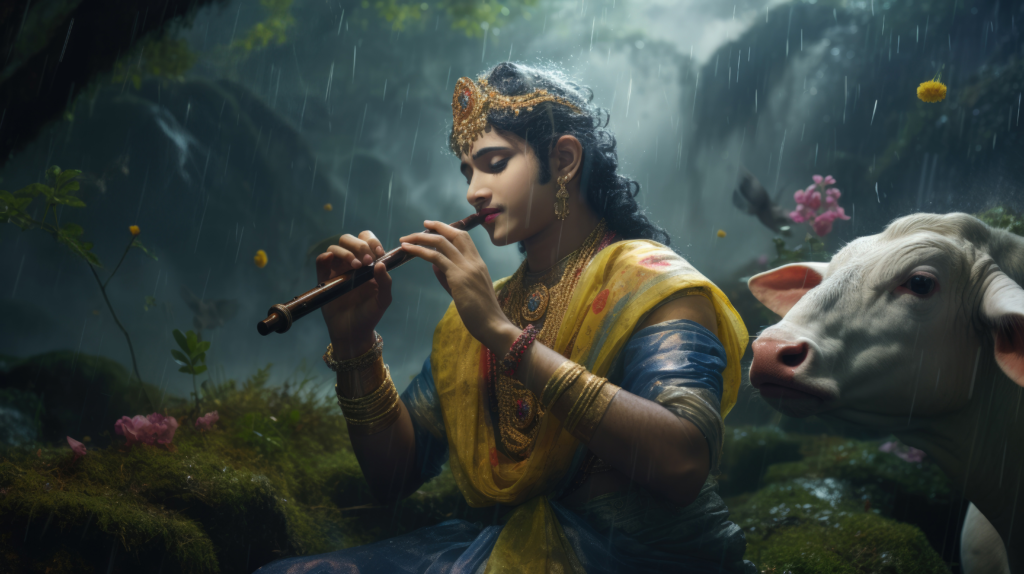
Mythological Context
Krishna, known for his divine playfulness and teachings, embodies love, wisdom, and the complexity of human experience.
Evolutionary Explanation
Krishna symbolizes the peak of human civilization, integrating advanced technologies and philosophical wisdom.
Key Evolutionary Concepts
- Technological and Cultural Advancements: Modern civilization represents peak human innovation and cultural development.
- Spiritual and Moral Evolution: The synthesis of scientific progress with spiritual insights defines contemporary human experience.
10. Buddha (The Enlightened One)
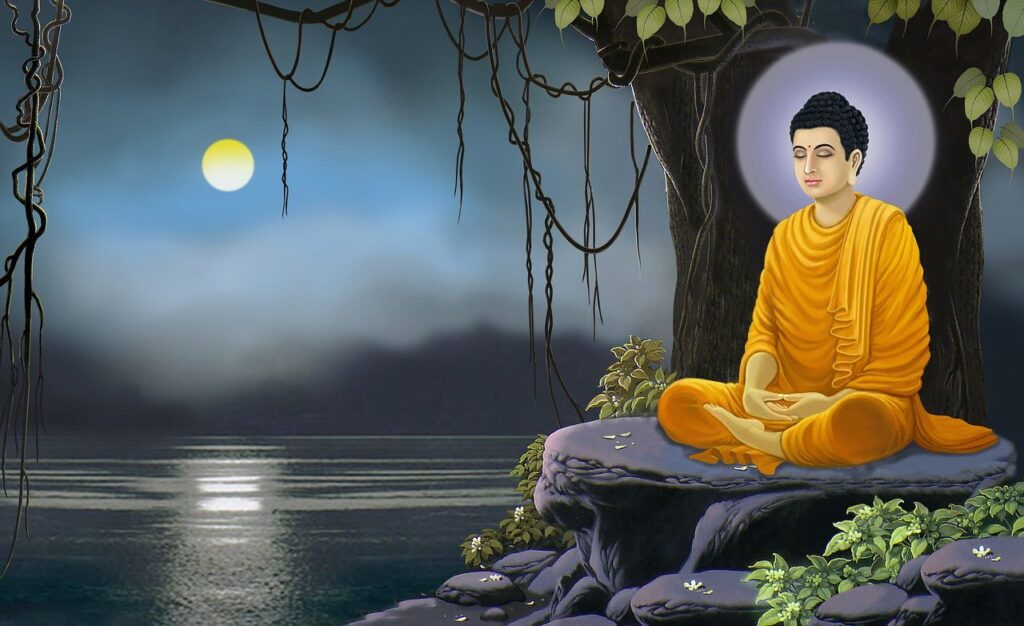
Mythological Context
Buddha, an avatar of Vishnu, represents enlightenment and the path to spiritual liberation. His teachings focus on overcoming suffering.
Evolutionary Explanation
Buddha reflects humanity’s spiritual and philosophical maturation, involving the development of profound ethical and spiritual insights.
Key Evolutionary Concepts
- Philosophical Development: The emergence of philosophies addressing existential questions and promoting well-being.
- Ethical Evolution: Cultivation of moral values and practices that enhance human flourishing.
11. Kalki (The Future Warrior)
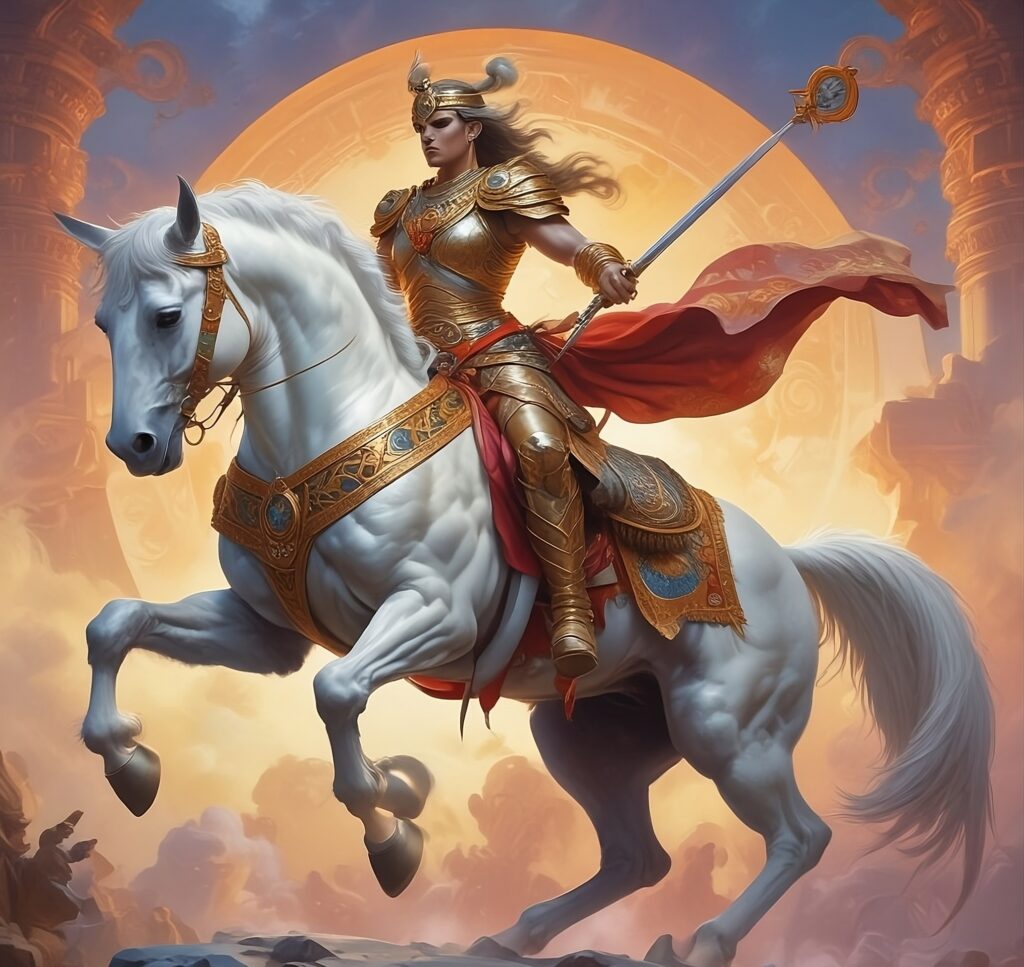
Mythological Context
Kalki is the prophesied future avatar who will restore cosmic order at the end of the current age. This avatar symbolizes ultimate transformation and renewal.
Evolutionary Explanation
Kalki represents the potential future evolution of humanity, involving advanced stages of development and spiritual enlightenment.
Key Evolutionary Concepts
- Future Possibilities: Speculations about future human evolution, including technological and societal advancements.
- Transformation: The idea of renewal aligns with the ongoing evolution of human potential.
12. Conclusion
The Dashavatara avatars provide a rich narrative that aligns with evolutionary theory. Each avatar represents different phases of life and consciousness, offering a unique perspective on human evolution. By exploring these mythological figures, we gain insights into the intersection of ancient wisdom and modern scientific understanding.
